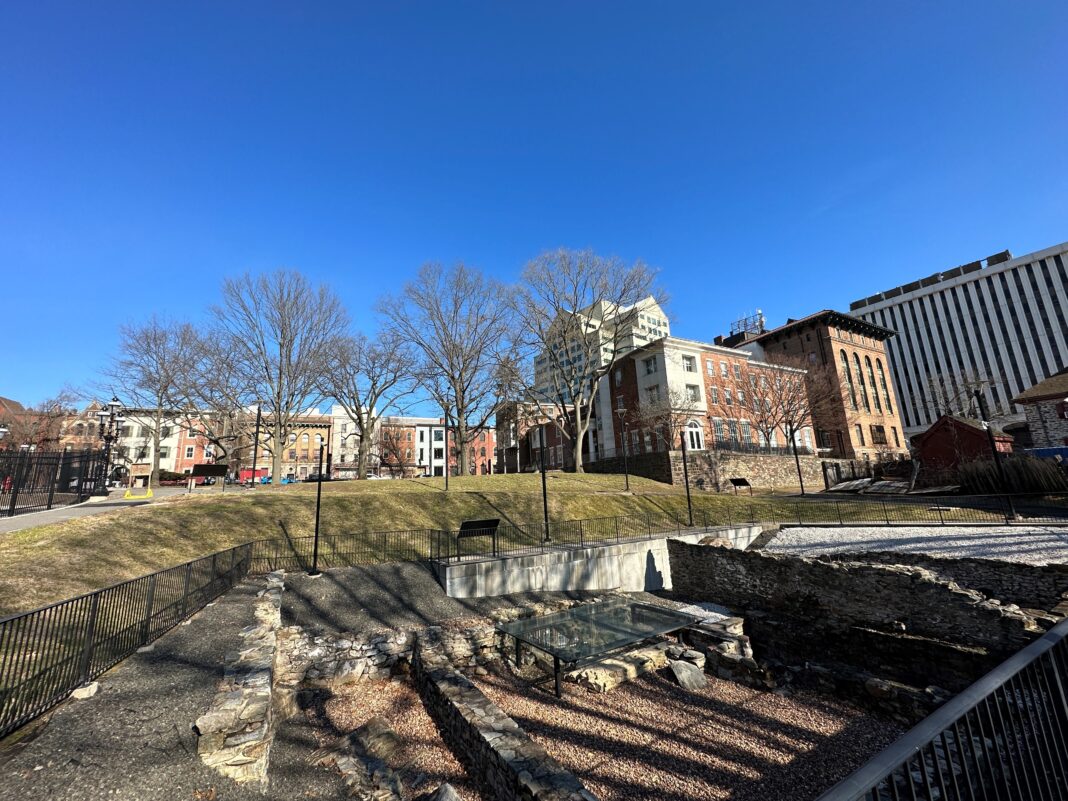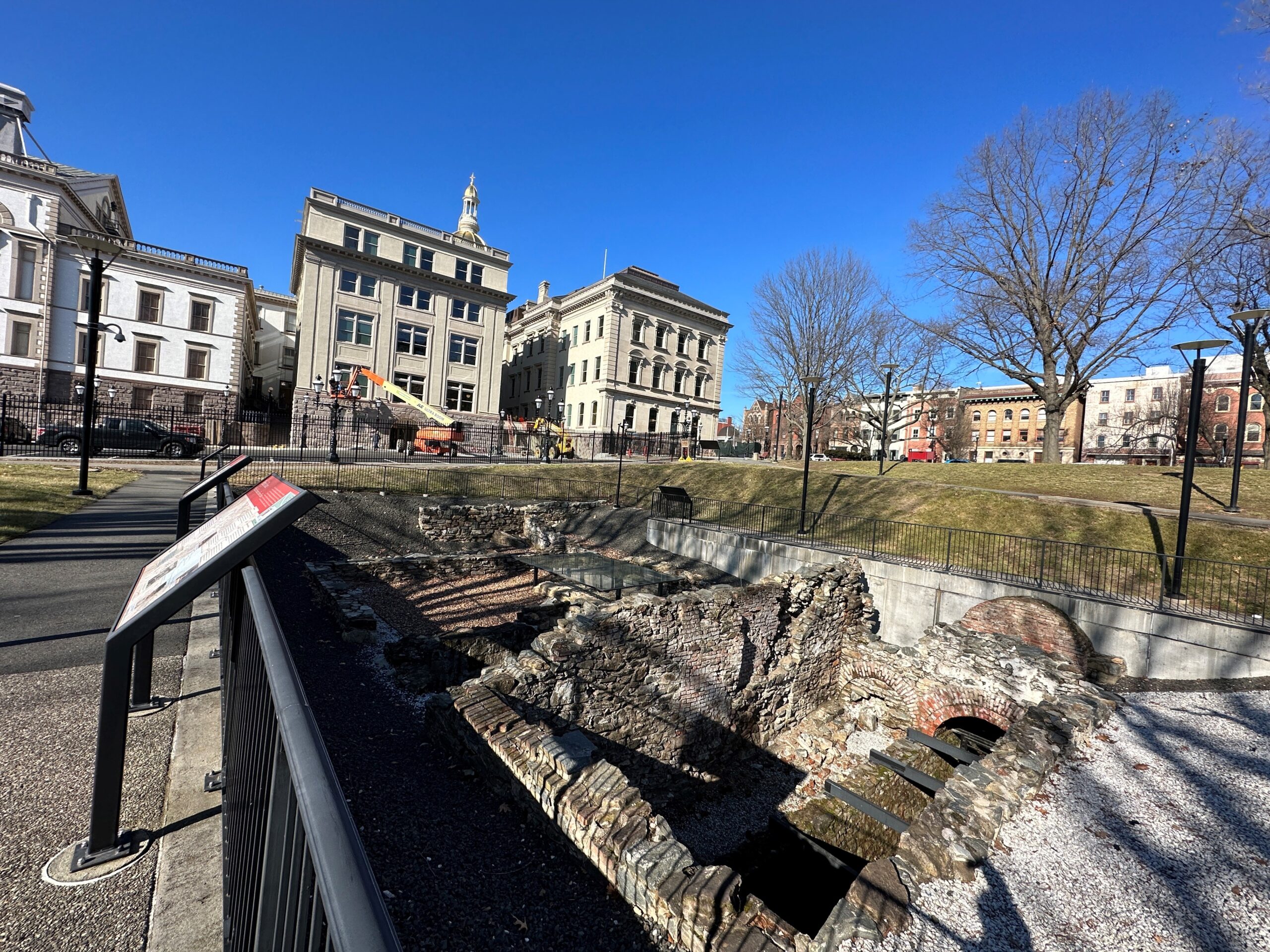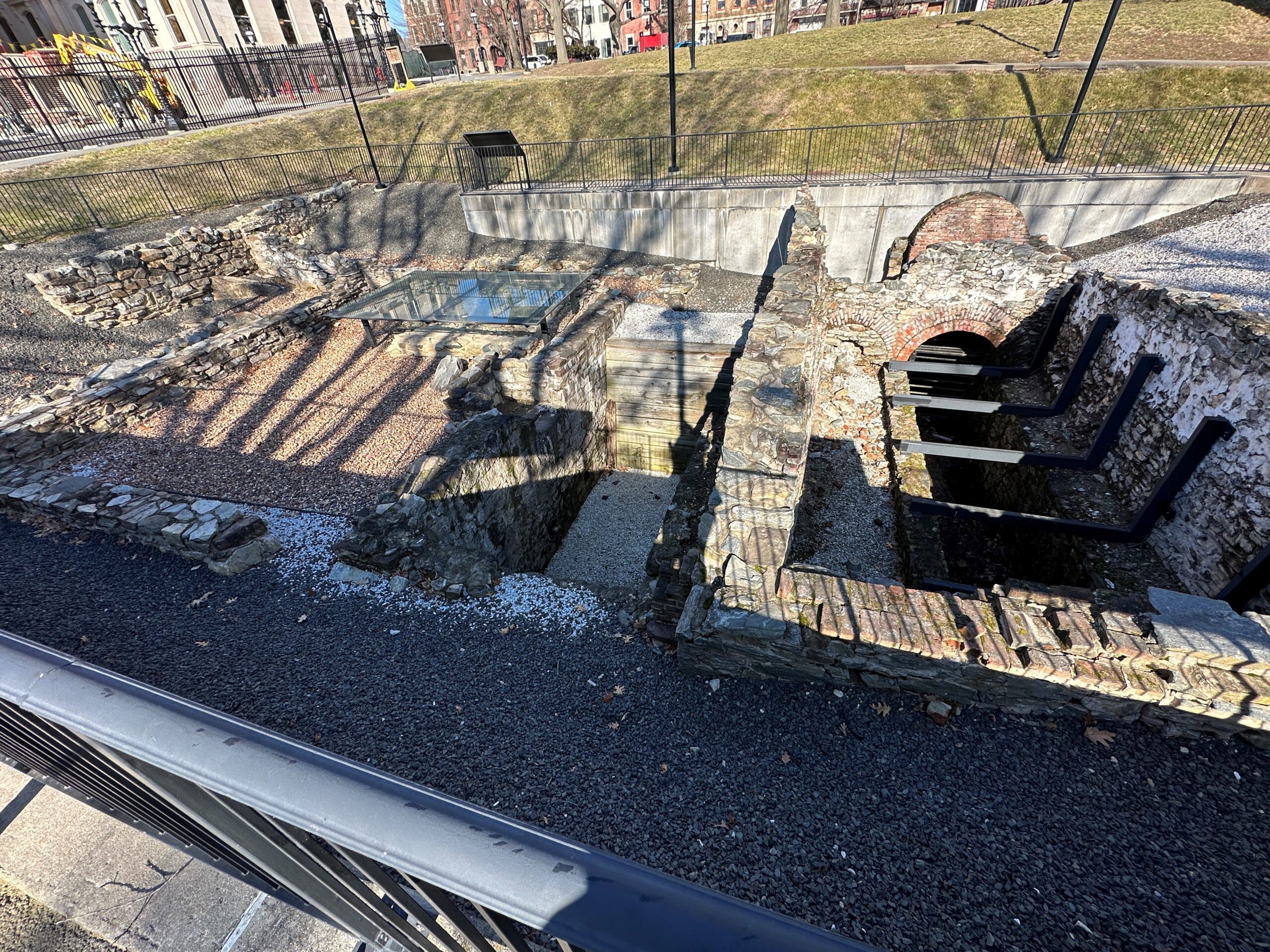If you’ve ever driven through Trenton, chances are you’ve seen New Jersey’s iconic Statehouse. Her shining golden dome and intricate stonework are perhaps the most recognizable symbol of the Trenton skyline. However, petty’s Run Archeological Site is hidden in the shadows of the Statehouse’s iconic dome, a glimpse inside Trenton’s industrial past.
Before the Statehouse was built along West State Street, the property was home to Trenton Steel Works. Petty’s Run Archeological Site is the remains of the planting mill which began in the 1730s. In the 18th century, the creation of steel was no small feat. Before the Revolutionary War, most of the steel American colonists used was purchased from England. However, on rare occasions, an American plant could achieve the infrastructure and high temperatures needed to produce steel successfully. Trenton Steel Works was one such exception.
Even though Trenton Steel Works managed to produce some materials, their production was still irregular and, at times, even questionable. The science of creating steel had not yet advanced, and mills had to sustain temperatures between 1560°F and 1830°F to heat the iron and charcoal successfully. The final product of Trenton Steel Works was “blister steel,” known for its raised blistery appearance. This was a rather crude material, as it had to be hot-worked and rolled into bars. Materials would then be distributed to artisans, who would use the steel to create tools and other products.
During the Colonial period, Trenton Steel Works was one of just five available steel mills in the American colonies. The site’s discovery was the first archeologically documented American steel mill of the 18th century. The British were not kindly disposed towards American industry, so the British parliament began inventorying the U.S. steel industry to continue protecting British steel’s interests. British and American industrial interests continued to clash during the latter half of the 18th century, and plants like the Trenton Steel Mill directly opposed British forces. But, of course, tensions in the steel industry were just a drop in the bucket compared to the disputes to come during the American Revolution.
One of the most significant achievements of Trenton Steel Works was its contributions to the Revolutionary War. The site was used during the war to make gun barrels and bayonets for colonial soldiers. However, in the autumn of 1776, British forces began approaching Trenton. As the troops came, it became increasingly evident that the mill was at risk of being overtaken by British soldiers. To prevent this potentially devastating scenario, patriot troops decided to demolish the mill to prevent it from falling into enemy hands. The site would be restored many years later, but the legend of Trenton Steel Works remains a critical portion of our nation’s industrial history.
To this day, the discovery of the steel mill at Petty’s Run is an unrivaled glimpse into the early days of American industry. Because steel production in the colonies was sparse in the 18th century, access to these remains has been critical in empowering archeologists and other experts to understand the capacities of our nation’s early settlers fully. As a result, tucked behind our state’s capital is a site that is truly unlike any other. Next time you’re in Trenton, take a walk alongside the statehouse grounds, and you’ll get a glimpse at something truly extraordinary.
SOURCES:
- https://njstatehousetours.org/tour/index.php/around-state-house/#
- http://www.hunterresearch.com/pettys-run
- https://www.preservationnj.org/listings/pettys-run-archaeological-site/
- https://www.hmdb.org/m.asp?m=78383








